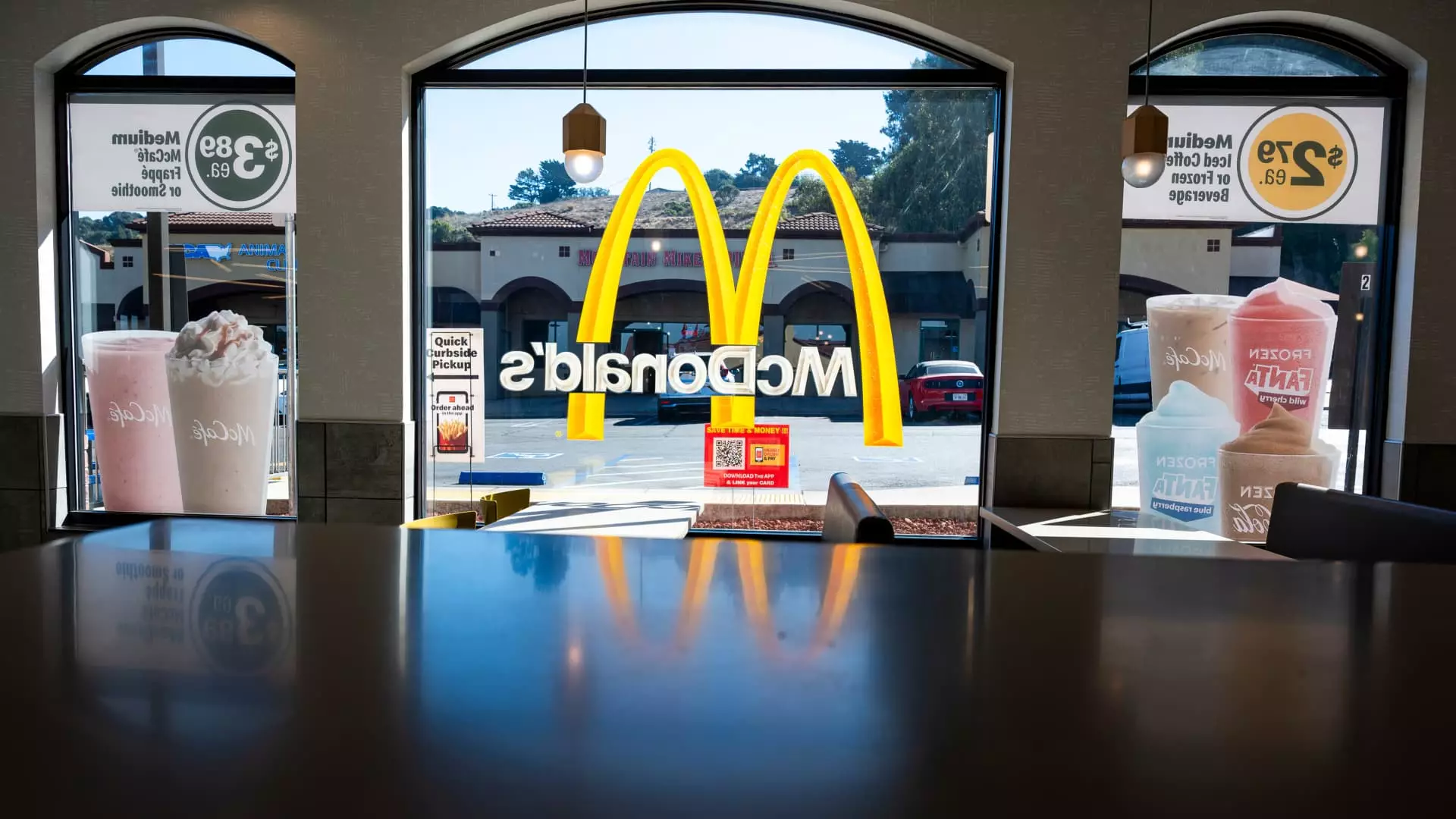The restaurant industry is often seen as a barometer for economic health and consumer sentiment. As we delve into the intricate dynamics that shaped the industry in early 2025, it becomes clear that market fluctuations, weather events, and evolving consumer behaviors have all played pivotal roles. Though restaurant executives are cautiously optimistic about improvement later in the year, the initial months paint a picture of significant challenges and transformations.
As the new year rolled in, restaurants across the United States faced a multitude of challenges that strained their operations. Freezing temperatures and wildfires sparked caution among consumers, leading many to cook at home rather than dining out. Prominent fast-food chains, including Burger King and Popeyes under the Restaurant Brands umbrella, began to witness a flicker of hope in the fourth quarter of the previous year as value-driven offerings tempted diners back to their establishments. Even McDonald’s reported a modest increase in domestic traffic, despite a decline in same-store sales. However, January brought with it a noticeable downturn, with Wendy’s CFO Kenneth Cook highlighting industry-wide traffic declines exacerbated by extreme weather across the nation.
The research firm Revenue Management Solutions reported a slight increase in fast-food net sales for January, up 3.4% compared to the same period last year. Yet, this growth marked a decline from December’s peak growth of 4.9%. The prevailing sentiment among consumers was that they were hesitant to engage fully with the restaurant industry, as Subway’s U.S. President Doug Fry noted. The consumers were weighing their options carefully, eager for quality food that offered a good value without compromising on portion sizes.
Despite dismal January figures, industry insiders expect improvements as the year progresses. The relative ease of year-over-year comparisons is likely to assist restaurants in their recovery. With 2024 marked by negative traffic every month except November and a general decline in sales during the summer months—a peak season for restaurants—a turnaround is anticipated. Restaurant Brands’ CFO Sami Siddiqui expressed hope that year-over-year comparisons would ease into the summer, contributing to a rebound.
However, the repercussions of January’s adverse weather and consumer sentiment shouldn’t be underestimated. Chipotle’s estimates indicated that poor weather could have adversely affected its same-store traffic growth by as much as 4%, leading to an overall decline of 2% for the month. Caution persisted, and the company’s expectations for flat same-store sales in the first quarter indicate a looming struggle to regain momentum.
Amidst the optimism is an undercurrent of fear stemming from broader economic concerns, including inflation and potential trade war repercussions under the new administration. U.S. consumer sentiment nosedived to a seven-month low in February, compounded by concerns over rising food prices. With away-from-home food prices increasing by 3.4% over the past year, consumers are apprehensive about budgeting for their dining experiences.
Additionally, while the likes of Chipotle and McDonald’s downplay the potential impacts of tariffs on food costs—Chipotle notably imports a significant amount of its avocado supply from Mexico—there is still palpable consumer concern about the knock-on effects on pricing. The implications of these potential future costs make diners more discerning about their spending, thereby affecting restaurant traffic.
As the industry continues to assess rebuilding strategies, recovery looks different across various chains. While McDonald’s may see a rebound in demand following a series of sales challenges related to an E. coli outbreak tied to its Quarter Pounder burger, the company’s CEO Chris Kempczinski anticipates a full recovery only by the second quarter.
Starbucks paints a considerably gloomier picture, having struggled with four consecutive quarters of declining same-store sales. The coffee giant temporarily suspended its forecast for fiscal 2025, pointing to their internal restructuring and elevated investments contributing to their performance slump. CFO Rachel Ruggeri noted that while earnings might improve later in the fiscal year, the sheer scale of the company’s ongoing challenges signifies a rough road ahead.
While restaurant executives foresee a potential recovery by year’s end, prevailing weather conditions, shifting consumer behaviors, and inflationary pressures present ongoing challenges that cannot be ignored. As the landscape evolves, the industry must adapt to shifting dynamics to entice consumers back through the doors and cultivate lasting loyalty.


Leave a Reply